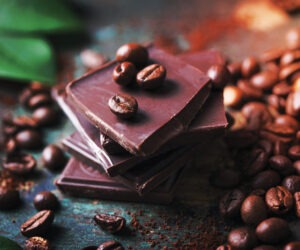Brewing Wheat Beers: Tips from the Pros
Often associated with easy summer drinking, wheat beers are common in many brewing cultures including Germany, Belgium, and North America. And in smaller quantities wheat is beneficial to many styles to increase head retention, mouthfeel, and texture. Yet, there are added difficulties compared to all-barley styles due to their lack of husks, which can cause lautering issues and even the dreaded stuck mash. Two pro brewers share how they brew gold medal-winning wheat beers, work to avoid the common pitfalls, and incorporate wheat into their brewing repertoire. With their advice, you too can be sipping a fine wheat beer on the patio as the summer heats up.

Dr. Aaron Gilling is the Co-Owner, Head Brewer, and half of the namesake behind Stubborn Brothers Brewery in Shawano, Wisconsin
When we first opened, everyone wanted us to make a light beer. We didn’t want to make a classic light American lager at the time, so we decided on a light, refreshing American wheat. We try to always use local ingredients so we worked with Malteurop Malting Company in Milwaukee to get Wisconsin-grown 2-row and malted wheat. Wheat makes up 70% of the grain bill and lays a great foundation for an easy-drinking beer perfect for summer weather. Wheat provides a nice base for a beer that complements fruit or yeast flavors, and is a nice alternative to light lagers for those looking for something in the same ballpark.
We aimed for 4.5% ABV to make Sweet Peel easy to drink, but we didn’t want to make it so boring so we peeled a few hundred pounds of oranges to add a hint of complexity with a Belgian yeast fermented cold. At this point, it probably sounds like a Belgian wit, however we skip the coriander and we consider it an American wheat (fermenting cool will tame some of the common characteristics Belgian yeast is most known for).
The recipe for Sweet Peel is just standard malted white wheat as we were mostly looking for clean and crisp and didn’t feel other wheats would add an additional layer to the recipe. We have done unmalted wheat and flaked wheat in our sour beers and we find they do tend to assist with body and foam stability. If I were still homebrewing and I was jumping on the wheat train for unmalted wheats, I’d stick with flaked wheat as it is pre-gelatinized, making it easy to work with.
We use a ton of Chico ale and Andechs lager yeast in our brewery as we make a lot of clean, highly drinkable beers. Sweet Peel is an exception, utilizing an easy-to-use Belgian strain that we encountered by sheer dumb luck that provides some light phenolics that play well with citrus. That’s the joy of brewing, just trying stuff out.
We’d strongly encourage homebrewers to invest in rice hulls if they are making a lot of wheat-based beers. Wheat can cause a stuck mash that will make you want to cry. We have found that layering your mash is an effective way to save you heartache. First add rice hulls, next barley, then lastly add the wheat. Try it, and thank the smart brewer who taught me that.
Some other advice I’d offer for brewing wheat beers is to get a dialed-in grind setting on your mill for your wheat, as wheat malt is often slightly smaller than barley. Make sure you’re using something besides 100% wheat or you’ll have a long brew day and a lot of time on your hands. And rice hulls are your friend. The best yeast for a wheat is sometimes the least expected and it’s good to experiment.

Paul Fryman is the Brewer and Co-Owner of JAFB in Wooster, Ohio
Wheat is a tremendous way to add mouthfeel, slickness, and texture to a beer. Of course, it comes with challenges . . . the obvious slow runoff, potential for a stuck mash, etc. These problems can be avoided with careful technique and rice hulls. I find a very, very small amount will go a long way when using rice hulls, but it may depend on the brewhouse setup. We use about 15–20 lbs. (6.8–9 kg) for a 7-barrel batch. So we are looking at 2–4 percent in terms of mash bill quantity. We could of course use much more but we get good results with that little amount. That said, all equipment is different in having the ability to handle a large portion of wheat in a mash. If you’re still having issues with lautering, you can try adding some extra rice hulls next time or try using a lower percentage of wheat and see if the flavor is still where you want it to be.
Our hefeweizen that won a gold medal at the 2021 Great American Beer Festival is brewed in the traditional German style. The recipe is roughly 50 percent wheat, give or take 5 percent counting acidulated malt for pH adjustment. It is brewed using a simple single infusion mash, but it has taken several years to figure out our tried-and-true recipe. Yeast selection, pitching amounts, temperature, and consistency are critical in brewing a good hefeweizen.
We have used several different wheat varieties and types on different beers over the years. I like both red and white wheat, but you get a little more color out of white wheat, which we like. For our application it makes sense to mostly use white wheat as we can use it in many different styles in smaller percentages, and of course in hefeweizen and other styles with large wheat additions. In fact, many of our beers have a small portion of wheat in them to help add texture. I’m talking like 5 percent or less. Think of it like Carapils® or Carafoam®, but instead we use wheat malt.
Wheat is an awesome ingredient. Have fun with it. I think it can be considered in any recipe and in any style.



